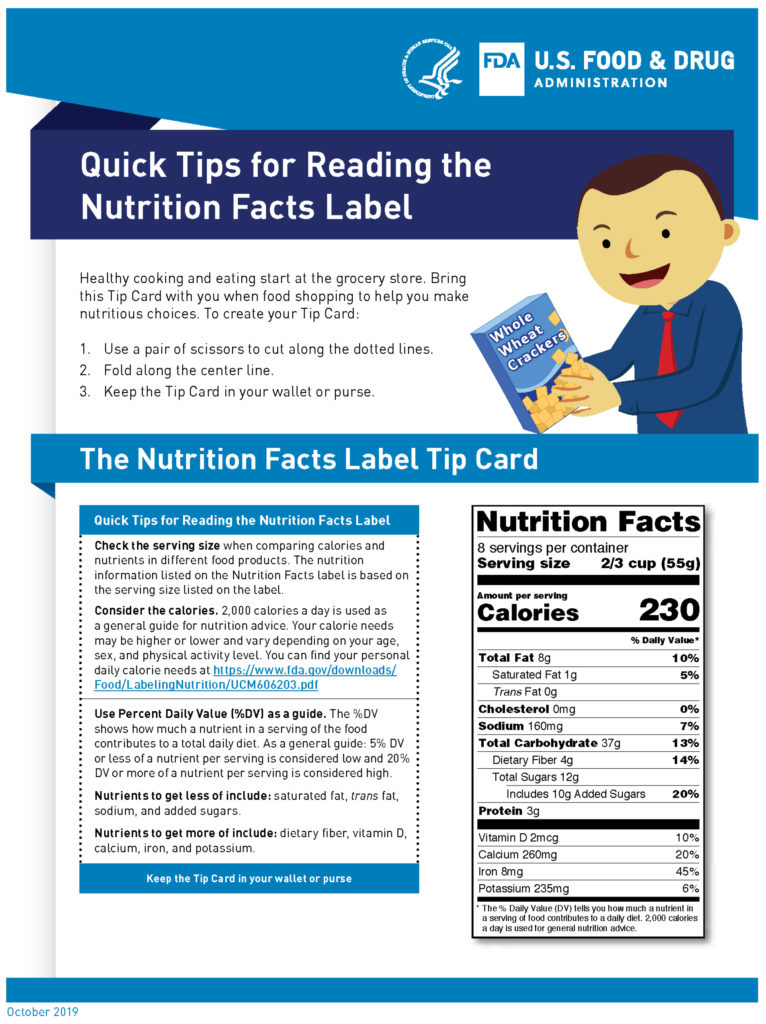Shelby Brawner, Extension Specialist
Quick Tips for Reading the Nutrition Facts Label
Healthy cooking and eating start at the grocery store. Bring this Tip Card with you when food shopping to help you make nutritious choices. To create your Tip Card.
- Use a pair of scissors to cut along the dotted lines.
- Fold along the center line.
- Keep the Tip Card in your wallet or purse.
The Nutrition Facts Label Tip Card
Quick Tips for reading the Nutrition Facts Label
Check the serving size when comparing calories and nutrients in different food products. The nutrition information listed on the Nutrition Facts label is based on the serving size listed on the label.
Consider the calories. 2,000 calories a day is used as a general guide for nutrition advice. Your calorie needs may be higher or lower and vary depending on your age, sex, and physical activity level. You can find your personal daily calorie needs at FDA’s website.
Use Percent daily Value (%DV) as a guide. The %DV shows how much a nutrient in a serving of the food contributes to a total daily diet. As a general guide: 5% DV or less of a nutrient per serving is considered low and 20% DV or more of a nutrient per serving is considered high.
Nutrients to get less of include: saturated fat, trans fat, sodium, and added sugars.
Nutrients to get more of include: dietary fiber, vitamin D, calcium, iron, and potassium.

